Kentucky’s new license year begins March 1, which is also the unofficial start of spring fishing.
Anglers are getting their fishing gear ready, making a list of what they need, in the way of line, hooks, sinkers, jigs, and lures. They may also be performing annual maintenance on their boats and motors.
This time of year another major decision for anglers is what fish species are going to be targeted, and where they are going to fish.
If your plans include traveling to several bodies of water, it only makes sense to learn about the non-native plants and animals that have become established in Kentucky waters, their impacts on fisheries, and how to prevent their spread.
As an overview, here’s a good starting point for learning about aquatic and terrestrial non-native species.
Here are more details on four species of aquatic non-native plants and animals that have been established here:
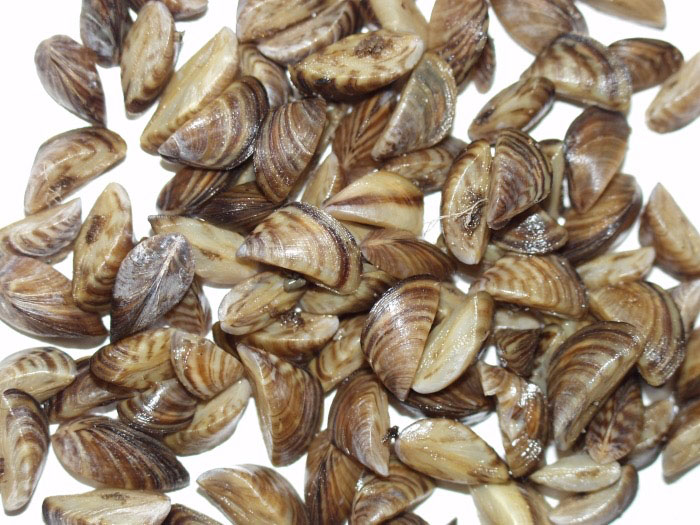
• Zebra Mussels endanger native mussel populations, and affect the food chain, water clarity and spawning substrate of native gamefish species.
The Zebra Mussel (Dreissena polymorpha) is native to the lakes of southern Russia and Ukraine.
The thumbnail-size, D-shaped brown or yellow-striped mussel became established in the Great Lakes in 1986 and have since populated most of the connected waterways, including the Ohio, Mississippi, Cumberland, and Tennessee Rivers.
Thought to have been brought to North America from Europe in the ballast of freighters, the Zebra Mussel filters large volumes of water, while consuming zooplankton, the primary food of young-of-the-year gamefish species. Dense clusters of adult Zebra Mussels, as many as 100,000 in about a square yard, encrust bottom structure, affecting spawning substrate for gamefish.
The first verified sighting of Zebra Mussels in Kentucky occurred in November 1991 in the lower Ohio River near Paducah.
Since that time Zebra Mussels have been found in Kentucky Lake, Lake Barkley, Dale Hollow Lake, Taylorsville Lake, Carr Creek Lake, Dewey Lake, and Fishtrap Lake.
In November, 2022, biologists with the Kentucky Department of Fish and Wildlife Resources (KDFWR) confirmed the presence of zebra mussels in Williamstown Lake, a popular northern Kentucky lake in Grant County.
Research has shown that Zebra Mussels can outcompete native species of mussels, leading to their decline and disappearance. A female Zebra Mussel can produce 30,000 to 1 million eggs per year.
Anglers can help stop the spread of the Zebra Mussels and protect their boats by observing these precautions.
Inspect your boat, motor, livewell, and boat trailer thoroughly. Remove any mussels that are attached and destroy them by placing them in a jar filled with rubbing alcohol.
Flush the outboard, bilge, and livewell with uncontaminated water to remove veligers, the larval stage of the mussel, that are so small they are invisible to the naked eye.
Zebra Mussels can live out of the water for up to 10 days but cannot tolerate prolonged heat. A practical remedy is to dry-dock your boat on its trailer for several days in the sun.
• Eurasian Water Milfoil (Myriophyllum spicatum) is native to Europe, Asia and Africa, and was likely introduced into North America in the 1940s.
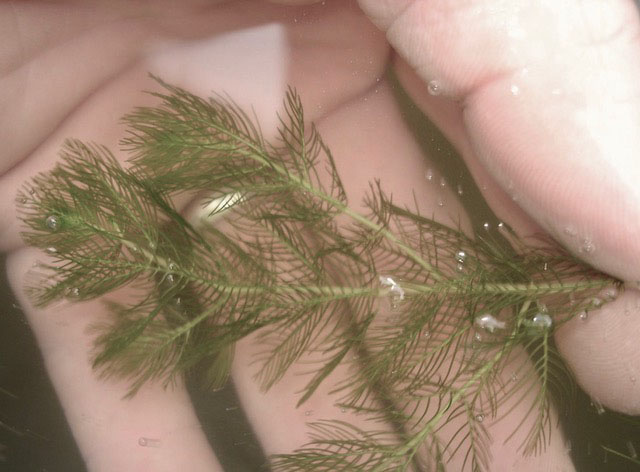
Water Milfoil is an aggressive non-native plant that was probably brought to the U.S. as an aquarium plant. The thick stems are multi-branched, with gray-greenish leaves. The leaves are in whorls of 3 to 5 around the stem with each leaf divided into 12 or more pairs of limp, thin thread-like leaflets that look like small feathers. It forms thick, underwater mats that can grow to the water’s surface.
Milfoil is widely spread across the state, in many lakes and farm ponds. A certain amount of aquatic vegetation is good for a lake but when mats get so thick that they restrict water movement, lakes can become stagnant.
This highly invasive species can spread quickly, and negatively impact fisheries. The dense mats create microhabitats for juvenile fish but obstruct space for larger fish, disrupting normal feeding patterns and movements into the shallows to spawn.
Dense growth can also lead to hypoxic zones. Aquatic plants create (dissolved) oxygen in the water by day and use it at night, but if mats get too dense oxygen levels can be drawn down to critically low levels at night.
• Hydrilla (Hydrilla verticillata) is native to Asia, Africa and Australia.
It is believed that Hydrilla became established in the U.S. following several accidental and/or intentional releases in the 1950s and 1960s from aquariums into waterways in Florida.
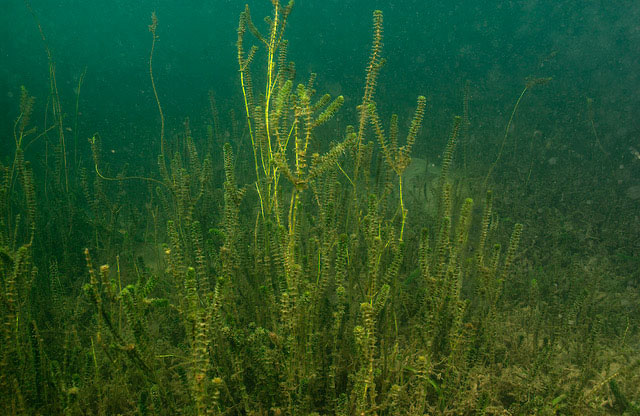
By the late 1990s Hydrilla had spread throughout Florida and the southeastern U.S.
Hydrilla forms dense branching colonies which after reaching the surface extend across it forming thick mats. Leaves are blade-like with small tooth margins and spines on the underside of the midrib which make them feel rough. Leaves are usually 4 to 8 in a whorl. Hydrilla can form mats on the water’s surface in water up to 20 feet deep.
It’s uncertain exactly when and how Hydrilla reached Kentucky waters, but it has been in several of Kentucky’s major lakes for about 20 years and is established in Carr Creek Lake, Cave Run Lake, Dewey Lake, Greenbo Lake and Paintsville Lake.
Hydrilla is an aggressive and competitive plant that displaces native aquatic plant species, and has caused severe economic, environmental, and ecological damage across the country. Removal treatments by mechanical means or by applications of herbicides are extremely expensive, and often more than fish and wildlife agencies can afford.
• Brazilian Elodea (Egeria densa) is native to South America, mainly southeastern Brazil, Argentina and Uruguay.
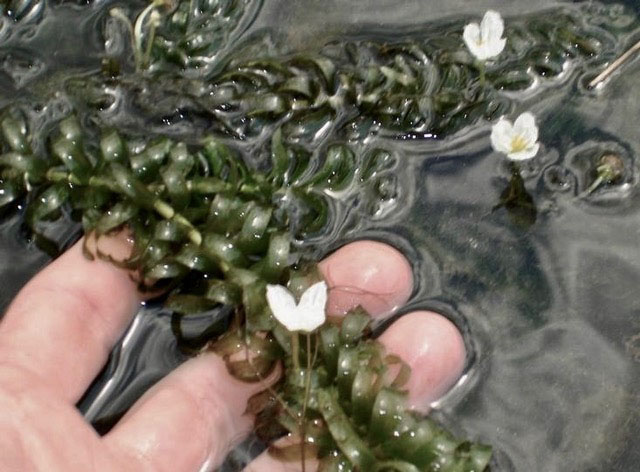
It is an invasive species that can grow in water up to 13 feet deep. A small white flower blooms at the surface.
This rooted multi-branched plant has dark green blade-like leaves in whorls of three with finely toothed margins. The flowers of Elodea have three white petals with a waxy coating that makes them float. It is often confused with Hydrilla.
Management options include cutting and raking, and chemical applications.
A biological option is the introduction of Grass carp (Ctenopharyngodon idella) that will consume Elodea and are excellent at controlling it.
Hydrilla and Brazilian Elodea thrive in Greenbo Lake.
Elodea is most aggressive in shallow waterways, forming thick mats that trap sediments, crowd out native vegetation, and impede the migration and spawning of fish in streams.
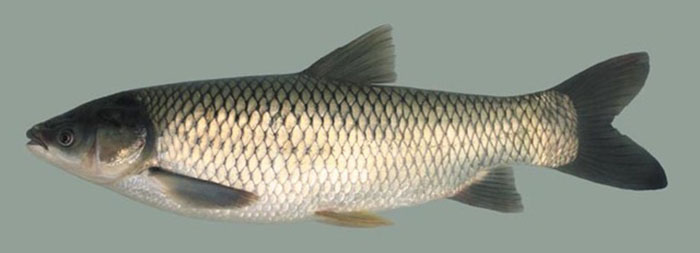
Anglers need to look over their boats carefully after every fishing trip to lakes where these nuisance plant species are present, especially if they are planning on traveling to other lakes.
Check your boat, motor prop and trailer, and remove any plant fragments. If you can, spray everything down with a hose.
Even the smallest plant filament or rhizome will root, and spread these invasive plants. Don’t encourage aquatic hitchhikers.


















